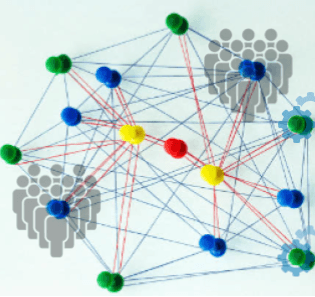What is Servant Leadership?
And why is it still so misunderstood?

If you type “Servant Leader” into a search engine, you’re likely to be shown many more links to articles about why servant-leadership doesn’t work than what it is and why it can be very powerful.
When you read these articles, the author has typically fallen into one of two common misunderstandings. The first is to consider a leader as someone with authority or holding a senior position. The second is that leaders must have a grand vision. So let’s look at the leadership part first. Then we’ll look at servant-leadership before finally considering the importance of this leadership style when forming self organising and ultimately, high performing teams.
What is Leadership?
Let’s start with a few important points of what leadership isn’t. Leadership is not:
- a special trait that only a select few possess
- superiority - it doesn’t mean you are the smartest person in the room
- authority - it empowers others, it is believing in peoples resourcefulness and helping them flourish
- desiring or gathering followers - A true leader inspires others to find leadership within themselves
- creating a group of people that wait to be lead
- always about a grand vision - We can think of situational leadership and having courage in the moment of choice...taking responsibility for making something happen as opposed to focussing on the external factors for why something is not happening.
You don’t have to lead everyone all the time. Take a lead in the moment, maybe for just one matter.
DEFINITION:
Leadership is a process of social influence, which maximizes the efforts of others, towards the achievement of a goal.
- Kevin Kruse
Notice key elements of this definition:
- Leadership stems from social influence, not authority or power
- Leadership requires others, and that implies they don’t need to be “direct reports”
- No mention of personality traits, attributes, or even a title; there are many styles, many paths, to effective leadership
- It includes a goal, not influence with no intended outcome
So what is Servant Leadership?
Well, the term was originally coined by Robert Greenleaf in 1970 and it did in fact refer to a new style of leadership, strongly implying that this was relevant to people holding senior positions in an organisation. However, numerous other theorists have contributed to our understanding of servant leadership. One theorist, Larry Spears, outlined ten characteristics of servant leaders by analysing the writings of Greenleaf. These ten characteristics are:
- listening
- empathy
- healing
- awareness
- persuasion
- conceptualisation
- foresight
- stewardship
- commitment to the growth of others
- building community
The leader should be a servant first, leading from a desire to better serve others and not to attain more power.
Why is Servant Leadership important in self-organising teams?
‘Self-organising teams’ is a large topic in itself, so we won't attempt to summarise the concept in its entirety here. However, to consider why servant-leadership behaviour is so important to introduce and practice, let’s just recap the points that are relevant to servant-leadership.
In his book, the 7 Habits of Effective People, Stephen Covey says,
“You cannot hold people responsible for results if you supervise their methods. You then become responsible for results and rules replace human judgment, creativity, responsibility.”
You want to set your team up for success by creating an environment that empowers them to make the right decisions and choose how things need to get done.
Self-organising teams do not wait for managers to assign work to them. Instead, they identify the work that needs to be done, prioritise tasks that are required, and manage the timelines on their own. Teammates effectively communicate with one another to identify tasks that have been picked up by others already and the ones that are remaining. Every member of a self-organising team sees the list of pending tasks as what is remaining for the entire team and not just for the individual.
Two crucial characteristics of these teams are:
- Respect and trust in the team - Team members need to have trust in the skills of their teammates and believe that everyone can get the work done even when there is no manager to hold them accountable. They should also respect each others’ opinions and find a way to work together even if they have opposing views.
- Ownership - All members of a self-organising team should have a strong sense of ownership and commitment towards their work and generating value to their organisation. With no one to point out their mistakes, members need to learn from their mistakes themselves and apply the lessons they learn to achieve effective results.
As such, true leadership, and crucially, liberal portions of servant-leadership help to:
- Prevent a ‘manager’ role emerging that can undermine true team dynamics where teammates want to do well for each other and not simply do something for (or impress) their boss.
- Ensure that the team has contributed towards a decision or an idea: With a servant-leadership mindset, you will focus on shared decision making and helping to build a consensus over your own personal preferences.
- Utilise the strengths of everyone.
- Create resilience in the team with several leaders, we all have an off day and someone else can step up.
Four steps to develop into a better Servant Leader
Of course there are many ways to summarise how to become a better servant leader, but in an attempt to keep things simple...
- Encourage diversity of thought
- Create a culture of trust
- Have an unselfish mindset
- Foster leadership in others
Servant Leaders are motivational leaders who foster great teamwork and promote ownership from ideas to solutions. The result is happier employees, more innovation, increased productivity, and a healthier organisation.
So what specifically can you start doing more of?
Be a leader that helps them to achieve great things together:
- Lead not by telling them.
- Lead by helping them to set clear and elevating goals.
- Lead by teaching an agile way of thinking.
- Lead by teaching them to think through the problems that you yourself contemplate.
- Lead by making them think for themselves.
- Lead by encouraging them all to be their best.
- Lead by example. I.e. exhibit the Scrum values. Be the change you want to see.
Self-organising doesn't mean there is no management, it means they can function without it.
Recommended Reading:
Want to explore this topic more and how to really get this type of culture to prevail in your company? Drop us an email to enquiries@ValueFlowSolutions.co.uk or contact us here.
We're always happy to talk through the various ways in which we can help.
References










